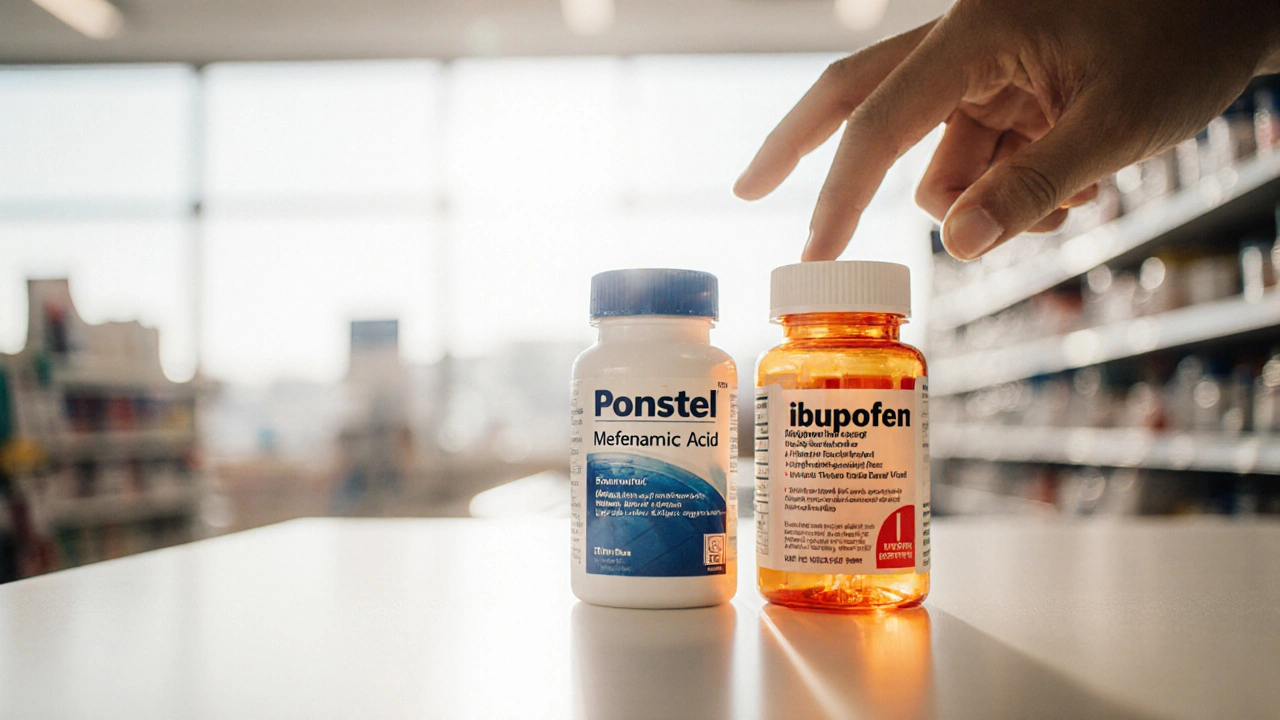Mefenamic Acid – What You Need to Know
If you’ve been handed a prescription for mefenamic acid, you probably wonder what it does and how to use it safely. In short, mefenamic acid is a non‑steroidal anti‑inflammatory drug (NSAID) that helps reduce pain and inflammation. Doctors often prescribe it for menstrual cramps, toothaches, muscle strains, and other short‑term aches.
The drug works by blocking cyclo‑oxygenase enzymes, which lowers the production of prostaglandins – chemicals that cause pain and swelling. Because it acts quickly, many patients feel relief within an hour of the first dose.
How to Use Mefenamic Acid Safely
Follow these simple steps to get the best results and avoid problems:
- Take with food or milk. This reduces stomach irritation, a common complaint with NSAIDs.
- Stick to the prescribed dose. Typical adult doses are 250 mg taken three times a day, but your doctor may adjust it based on your condition.
- Don’t exceed five days. Extended use raises the risk of ulcers, kidney issues, and heart problems.
- Avoid alcohol. Mixing alcohol with mefenamic acid can increase stomach bleeding.
- Check other meds. Anticoagulants, other NSAIDs, and certain blood pressure drugs can interact badly.
If you miss a dose, take it as soon as you remember – unless it’s almost time for the next one. Don’t double up.
Common Questions About Mefenamic Acid
Is it safe for everyone? Not really. People with a history of stomach ulcers, kidney disease, or heart failure should discuss alternatives with their doctor.
Can it be used during pregnancy? Generally, it’s avoided in the third trimester because it may affect the baby’s heart. Always ask your provider.
What side effects should I watch for? Mild stomach upset, nausea, and headache are common. Seek medical help if you notice black stools, severe stomach pain, or swelling in your legs.
Will it affect my labs? NSAIDs can raise blood urea nitrogen (BUN) and creatinine levels, so your doctor might run kidney tests if you need long‑term therapy.
For more practical health tips, check out other articles on our site. We have guides on daily Crohn’s disease management, antibiotic comparisons, and ways to buy cheap generic meds safely. Those pieces can help you understand how different drugs interact and how to keep costs low.
Remember, mefenamic acid is a short‑term solution. If your pain persists beyond a week, talk to a healthcare professional. They may suggest a different medication or a non‑drug approach such as physical therapy or dietary changes.
Bottom line: take mefenamic acid with food, stay within the prescribed time frame, and watch for warning signs. When used correctly, it can provide quick relief without the hassle of chronic side effects.

Ponstel (Mefenamic Acid) vs Alternatives: Which Pain Reliever Fits Best?
A clear, side‑by‑side look at Ponstel (Mefenamic Acid) versus common pain‑relief alternatives, covering effectiveness, safety, dosing, and when each option is best.
